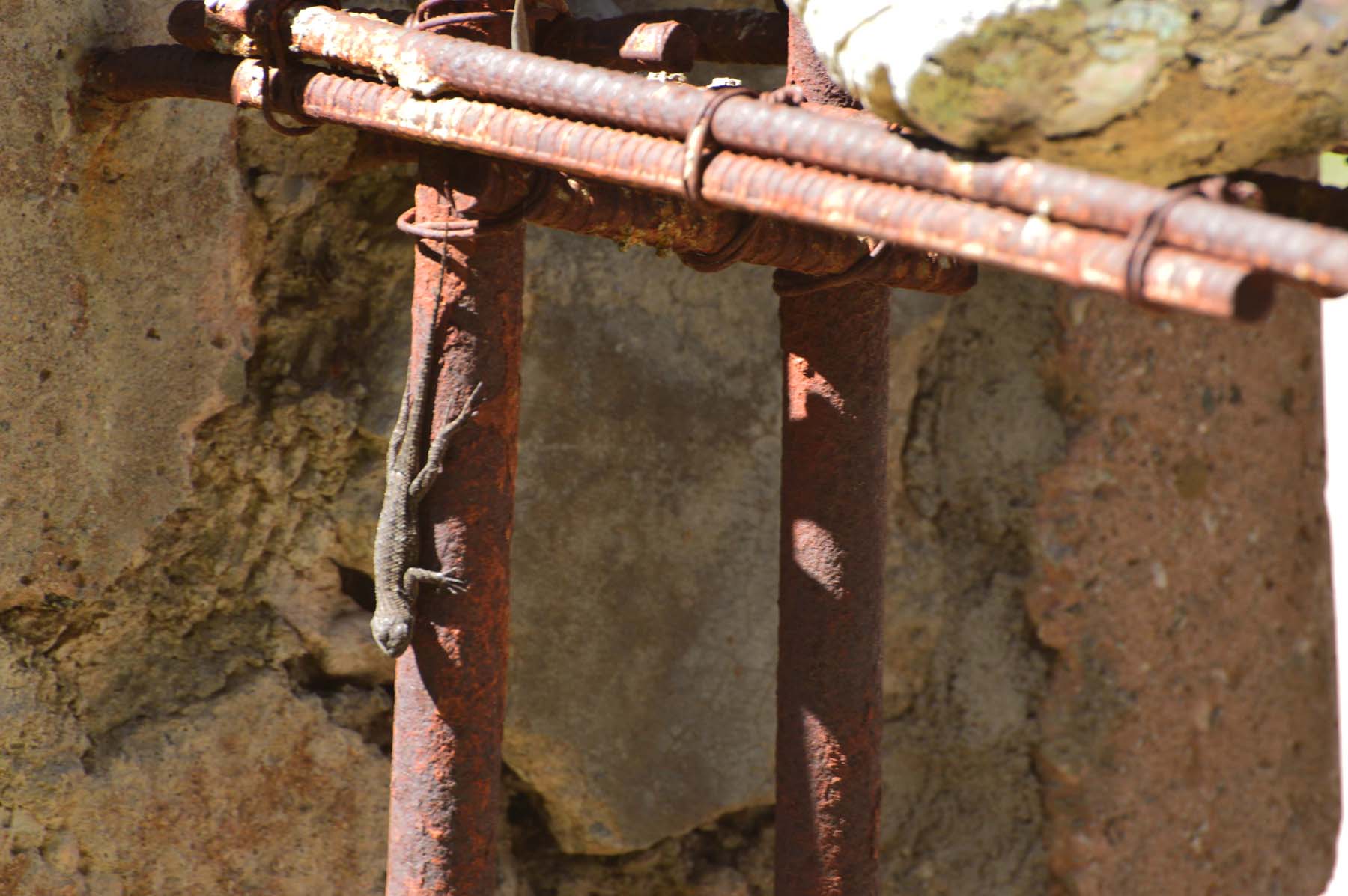““Precisely the least thing, the gentlest, lightest, the rustling of a lizard, a breath, a moment, a twinkling of the eye – little makes up the quality of the best happiness. Soft!” – Friedrich Nietzsche Thus spoke Zarathustra
I learned some days ago that a new gecko species, discovered in India, was named Cnemaspis vangoghi because the blue coloration evoked Vincent van Gogh’s iconic “Starry Night” (1889.)

Nothing quite that fancy to be found around here, but, in truth, I consider all of the lizards beautiful, and was tempted to name this dotted fellow below Lizard Kusama. If Yayoi Kusama, the princess of polka dots, had the least bit of humor, she’d probably be pleased, given that she specializes in weird, as The Tate once claimed on their kids’ page…

Lots of artists have attempted to capture what is special about these little reptiles, representing their respective mythologies, trying to depict their biological features, or using them as symbols for an array of concepts. In ancient Rome, lizards were a symbol of death and rebirth, given that the animals hibernated in the winter months and reappeared in the spring. The Etruscans believed that lizards went blind as they aged but could regain their sight by bathing in bright sunlight, making them a symbol for light and heat.

Maria Sibylla Merian Lizard with eggs and hatchling, butterflies and banana plant. (1705)
Native American tribes created lots of lizard representations across the U.S, both as petroglyphs and pictographs. Their shapes are also a dominant feature of Aborigine art from Australia and New Zealand and folk art from Mexico and Central America.




Leonardo da Vinci used them for stage settings.

Leonardo da Vinci Allegory on the Fidelity of the Lizard (recto) (1478)


Scientific treatises of the Middle ages mixed fact and fiction.

Konrad Gesner, Historia Animalium Liber Ii : De Quadrupedibus Ouiparis (1586.)


Some artist quite often added them as small details to larger compositions, here one of my favorites for its color.

Paul Gauguin Vairumati (detail) (1897)

Some were playful,

Paul Klee Eidechse (1926)

some were constructed,

Maurits Cornelius Escher Lizard (no.25) 1939

and some are simply allegorical.

Joan Miró Le lezard aux plumes d’or (1971)

Lizards’ rustlings are ubiquitous here at the Zorthian ranch where they abide in abundance. An old, abandoned piano on the patio is home for quite a number of them, begging to be photographed. Although none of these images can live up to what one of the most brilliant Mexican photographers, Graciela Iturbide, has captured across the decades, they, or perhaps the moments when they were captured, are of the quality – little, fleeting – that makes for the best happiness.



That said, do check out Iturbides‘ work – it is phenomenal.

Graciela Iturbide Nuestra Señora de las Iguanas (Our Lady of the Iguanas), Juchitán, México. (1979.)

Graciela Iturbide Lagarto (Lizard), (1986)
Music today by Sibelius. The Lizard, of course.







Sara Lee Silberman
As always, a who-knew, interesting, enjoyable posting!